The Best Classic First-Person Shooters
USgamer takes a look at the some of the classics in the first-person shooter genre.
This article first appeared on USgamer, a partner publication of VG247. Some content, such as this article, has been migrated to VG247 for posterity after USgamer's closure - but it has not been edited or further vetted by the VG247 team.
The first-person shooter genre is not only one of the most popular styles of game out there today, it's also a genre with a long history.
We explored said history a while back with our Blast from the Past series (Part 1, Part 2, Part 3) but you may be wondering what are the best classic FPS titles that still hold up well today?
We at Team USG put our heads together and came up with this possibly-definitive list of the best classic first-person shooters you really should play if you haven't already. Think we missed something? Let us know in the comments.
Wolfenstein 3D
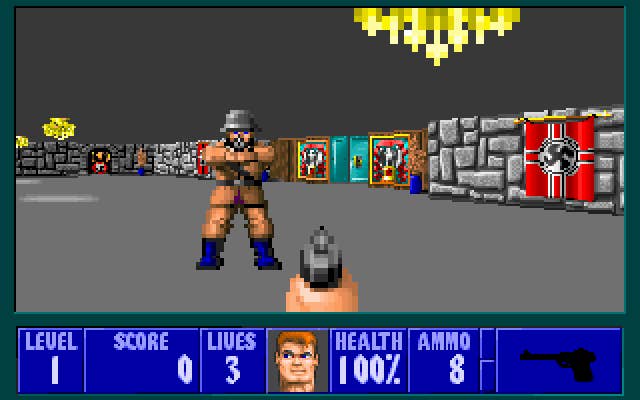
Pete: While not the first true first-person shooter to hit the market, id Software's Wolfenstein 3D is often credited with kicking off the genre's explosion in popularity, and is thus indirectly responsible for the glut in shooters we've had in the last few years.
Wolfenstein 3D is a very different beast to modern-day shooters, though; it's a curious blend of the "must grab all the shinies!" mentality of a pure arcade game -- you even have a score and lives -- and the blood-and-guts "OMG NAZIS" approach of a more realistic shooter. Well, realistic until the zombies start showing up, that is. And the Hitler ghosts. And Hitler in a robot suit. And, in the sort-of sequel Spear of Destiny, the Angel of Death.
Wolfenstein is still incredibly fun to play today -- though those used to WSAD controls and circle-strafing may find the control scheme of the original PC version somewhat tricky to adjust to -- and offers a substantial, lengthy challenge for those willing to go the distance. It's also available on pretty much every modern platform in the known universe by now, so you shouldn't have too much difficulty tracking down a copy.
Blake Stone: Aliens of Gold

Pete: The underappreciated not-quite-sequel to Wolfenstein 3D added a number of interesting elements to the mix -- most notably a non-linear level progression, allowing you to take the central elevator back and forth between floors you've already visited. It also brought us a solid automap system, textured floors and ceilings, and friendly NPCs whom you weren't supposed to shoot. It still wasn't really 3D, though.
Blake Stone also improved on Wolfenstein 3D's limited interactivity: in id's classic, you could open doors and occasionally push blocks aside to reveal secret passageways; in Blake Stone, meanwhile, you could make use of vending machines to restore your health -- assuming you had enough coins on hand, of course -- plus toggle switches and use traps to kill off bad guys without firing your weapon.
Like Wolfenstein 3D, Blake Stone offers a hefty challenge with lots of levels to explore, and is still worth playing today, particularly for those who like their games to kick their ass now and then. It's less widespread in terms of platforms than Wolfenstein 3D, but is available on Steam as part of the Apogee Throwback Pack.
Doom

Pete: Doom was one of several turning points in the genre's history, and one of the most significant leap forwards in terms of technology. Its biggest addition was the ability for levels to have "height" rather than being a flat 2D maze projected into 3D, which allowed for much more realistic level design. But Doom brought other innovations, too; lighting effects, enemies that would fight each other, a broader array of weapons which each took different types of ammunition.
It was also enormously atmospheric. The impressive visuals for the time coupled with the excellent sound design made for a genuinely terrifying experience, particularly when played alone, at night, with the lights off, with headphones on.
It also helped kick off the multiplayer revolution -- initially confined to LAN parties and direct connections between computers via serial cable or modem, but later expanding to Internet play thanks to additional services that sprang up to cater to the huge demand for Doom multiplayer. In other words, if you're sick of hearing about Titanfall, you can probably indirectly blame Doom.
Rise of the Triad
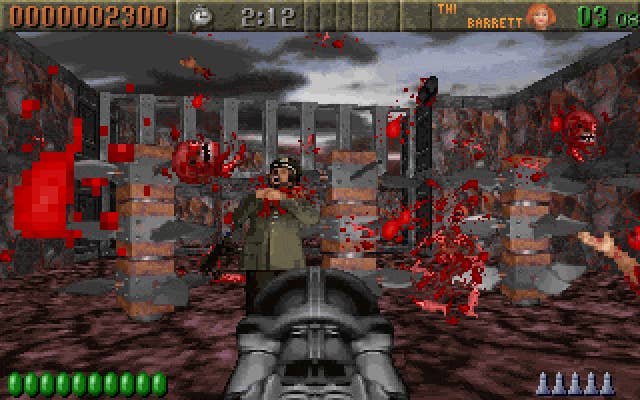
Pete: Rise of the Triad was utterly bonkers, and made no attempt whatsoever to be remotely realistic. We're talking about a game with springy jump pads (which later made a reappearance in some shooters such as Halo), moving platforms, a weapon called the "Drunk Missile" and the ability to turn into a dog and bite your assailants in the testicles.
Most of all, though, Rise of the Triad was super-fun despite not being the most technologically advanced title on the market. It was high-speed chaos that's well worth revisiting today -- though it's also worth noting that the recent reboot by Interceptor Entertainment captured the sheer intensity and silliness of the original while bringing the visuals bang up to date, so you may want to check that out instead if you can't deal with 320x200 resolution.
Hexen
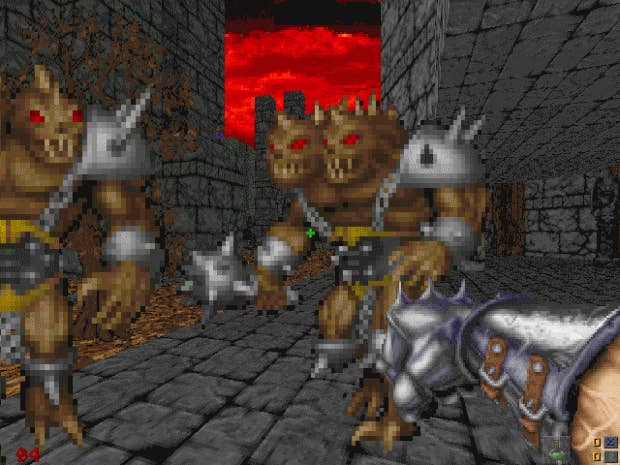
Pete: Hexen's predecessor Heretic was noteworthy for transplanting the first-person shooter genre to a fantasy realm for the first time, but it was its quasi-sequel Hexen that truly made something of the shift in styles. Offering several different character classes to play, hub-based rather than linear progression and some interesting level design, Hexen is an oft-forgotten highlight of the post-Doom era that, despite its primitive-looking visuals by today's standards, is well worth a revisit.
Its sequel, which added stronger RPG-style elements to the mix and which was built on the Quake engine, is also well worth a look if you can deal with fighting car-sized spiders with your bare hands. And just to confuse matters, there's also a Heretic II, which helped pioneer the modern third-person shooter genre in a rather primitive way.
Marathon Infinity
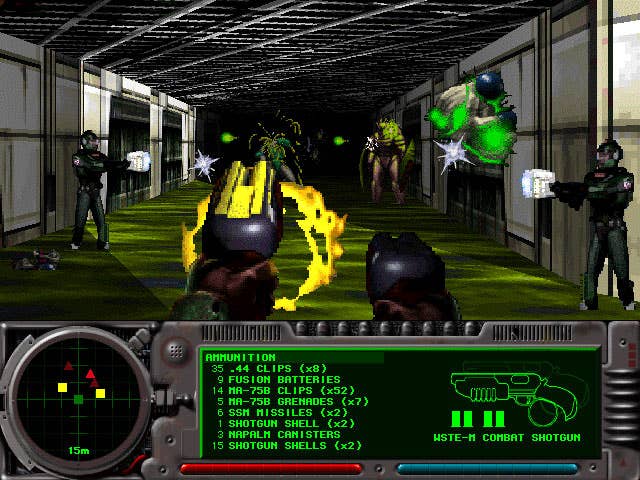
Jeremy: The original Marathon launched Bungie to minor stardom, and its sequel Durandal cast a wider net with improved tech, design, and cross-platform support beyond the Macintosh. The frequently overlooked third game in the series, however, is the true high point of the Marathon series – and, in my opinion, of pre-Half-Life shooter design.
Infinity reeked of ambition, both in its non-linear time-traveling plotline and its intricate maps, which pushed the “2.5D” tech of its pre-Quake engine to the absolute limits. Infinity was an experts-only affair for fans of the first two Marathons, with some utterly ruthless sequences – the set of stages where you’re fighting through narrow corridors against heavily armed cyborgs in an airless vacuum before your oxygen runs out screams “no quarter” – and a plot that fans are still trying to unravel. With constantly shifting scenery, a twisting storyline that sees you switching sides in a desperate race to prevent two rival AIs from destroying the universe, and a full suite of development tools for fans to create their own campaigns, Marathon went out with a bang.
System Shock
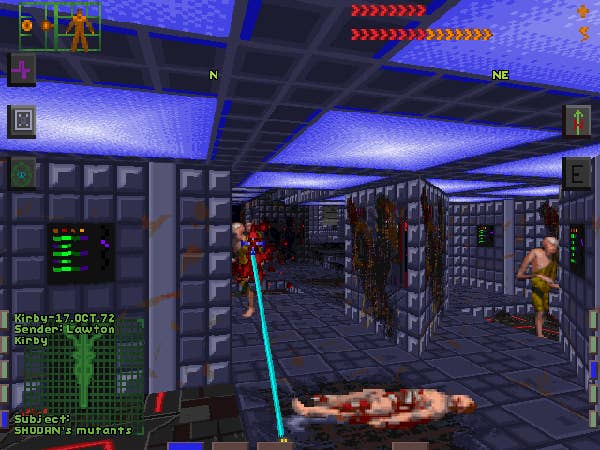
Pete: It's been a matter of some debate here at USG as to whether System Shock really counts as a first-person shooter -- personally, I'd argue it's more of a survival horror with RPG elements -- but whatever it is, it's a magnificent game that gave us one of the best villains of all time, not to mention proof that plot exposition doesn't have to be the sole preserve of hands-off cutscenes.
System Shock was a gloriously atmospheric game made all the more unnerving by the fact that the villain, runaway AI SHODAN, was omniscient, seemingly omnipotent and more than willing to make life very unpleasant for you. In terms of sheer atmosphere, it was supplanted only by its rather more RPG-ish sequel System Shock 2, which ran on the considerably more advanced, fully 3D Dark Engine originally developed for Thief: The Dark Project.
Duke Nukem 3D

Pete: Duke is an icon of a lost age -- not necessarily one we should be particularly proud of, but one we nonetheless lived through. As a game, Duke Nukem 3D was noteworthy for a number of reasons: firstly, for pushing the "2.5D" engines of the post-Doom era significantly forward with intricate, dynamic level design; secondly, for providing a sprawling campaign that unfolded across a diverse array of locales; thirdly, for being one of the earliest self-consciously "adult" games.
Duke Nukem 3D looks laughably immature now -- and perhaps did even back then -- but it was one of the first times we'd seen a mainstream game that was willing to use salty language and put suggestive content on the screen. Whether or not you think that is a good thing is, of course, a matter of opinion, but if nothing else it helped prove that gaming was "growing up" and certainly wasn't just the pursuit of little kids any more.
Quake
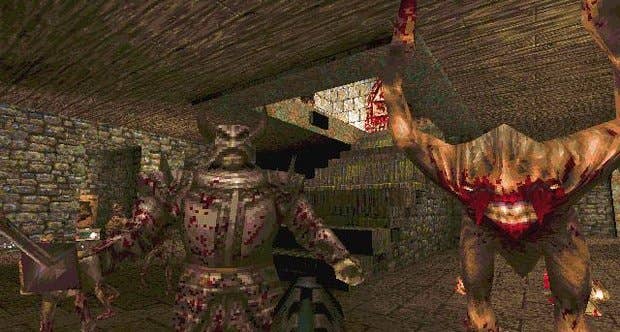
Pete: Duke Nukem 3D's biggest rival Quake was technologically superior in almost every respect, and had a markedly different feel to it. There was a genuine thrill to exploring environments in full 3D as opposed to the 2.5D of earlier games, and it made for some interesting level design which simply hadn't been possible on earlier engines.
Quake was also noteworthy for its unremittingly bleak atmosphere, and is arguably indirectly responsible for the amount of brown and vomit green we see in modern games. It was effective, though, and the atmosphere was expertly complemented by a terrifying and unconventional soundtrack by Nine Inch Nails' Trent Reznor.
Quake was a turning point in first-person shooter design, and while it's been superseded by many different games ever since, it's worth a play just to see where the modern shooter era truly kicked off in earnest.
Half-Life

Pete: Quake brought us shooting in 3D; Half-Life gave us a reason to shoot things through its in-engine story sequences that never saw you "breaking character" as protagonist Gordon Freeman.
Half-Life was also a big shift in game design for the first-person shooter. Rather than following a linear sequence of levels and never turning back, Half-life provided a quasi-open world experience, where you could run back and forth between areas as you saw fit. Of course, the game's narrative and progression was constantly pushing you forwards, but the option was pretty much always there to turn around, walk the other way and see if there was anything you missed in that building you just left.
Half-Life also had a strong multiplayer mode, and following in the footsteps of Quake, had a thriving mod scene that is still going strong today. In fact, a number of popular PC multiplayer shooters -- most notably Counter-Strike and Team Fortress -- rose to prominence through the Half-Life mod scene.
Half-Life was superseded by its superior sequel Half-Life 2 and its two Episodes, but remains worth playing today, particularly in its slightly-modernized version that makes use of the newer Source engine for enhanced physics and the like.
No-One Lives Forever

Pete: If you were a PC owner jealous of N64 players who got to play GoldenEye, No-One Lives Forever proved to be a more than adequate substitute. Offering a dizzying array of weird and wonderful gadgets alongside more traditional weaponry, NOLF was also noteworthy for rewarding experimentation, with most levels able to be completed through several different means. Run in guns blazing or adopt a more stealthy approach; the choice was yours.
No-One Lives Forever is also particularly worthy of note for having one of the strongest stories in a first-person shooter, helped along by its excellent protagonist Cate Archer. It span a socially aware tale of the spying game in the 1960s, with Archer having to contend with not only enemies of the state, but also her superiors' sexism. It's a game crying out for a modern sequel, but sadly with the rights lost in limbo, it's something we're unlikely to see any time soon.
Unreal Tournament/Quake III Arena


Mike: Both of these games launched in 1999, and together they defined an entire era of first-person shooters, much like Call of Duty: Modern Warfare has defined the last seven years of the genre. For five years everyone who played FPSs on PC played one of these two arena shooters. They divided themselves into factions, with arguments as strong and deep as the Nintendo vs. Sega Wars. Did you prefer running UT’s Facing Worlds map with the Shock Rifle and the Redeemer, or were you a Lightning Gun connoisseur fragging fools on The Longest Yard?
For a time, our shooters were fast, sci-fi-tinged, and high-flying. We jumped, rocket-jumped, jump-padded through some of the best level designs ever. Many of the veteran level designers of your favorite FPSes today probably got their start in one of these two games. That neither title has a current version or an HD remake is a goddamn travesty. On the bright side, if you want to see what all the fuss is about, both games are available on Steam. Quake III Arena is even playable on your web browser with Quake Live. Get to it, folks.








